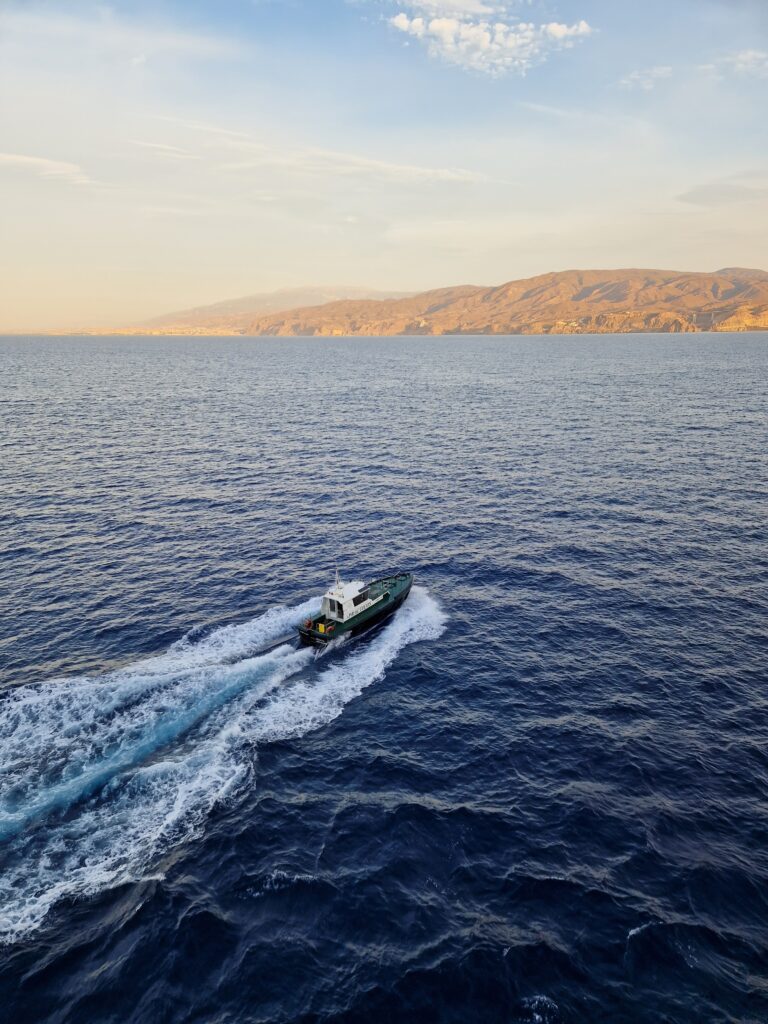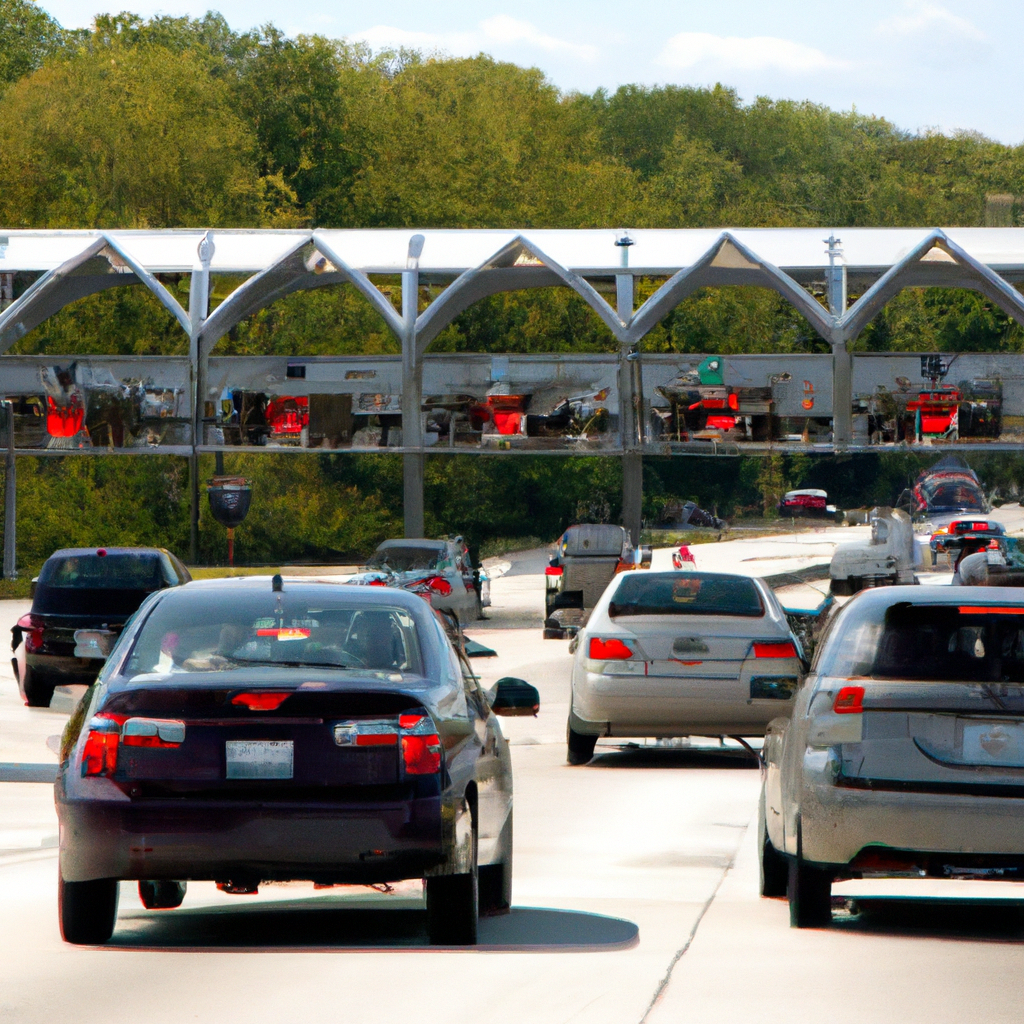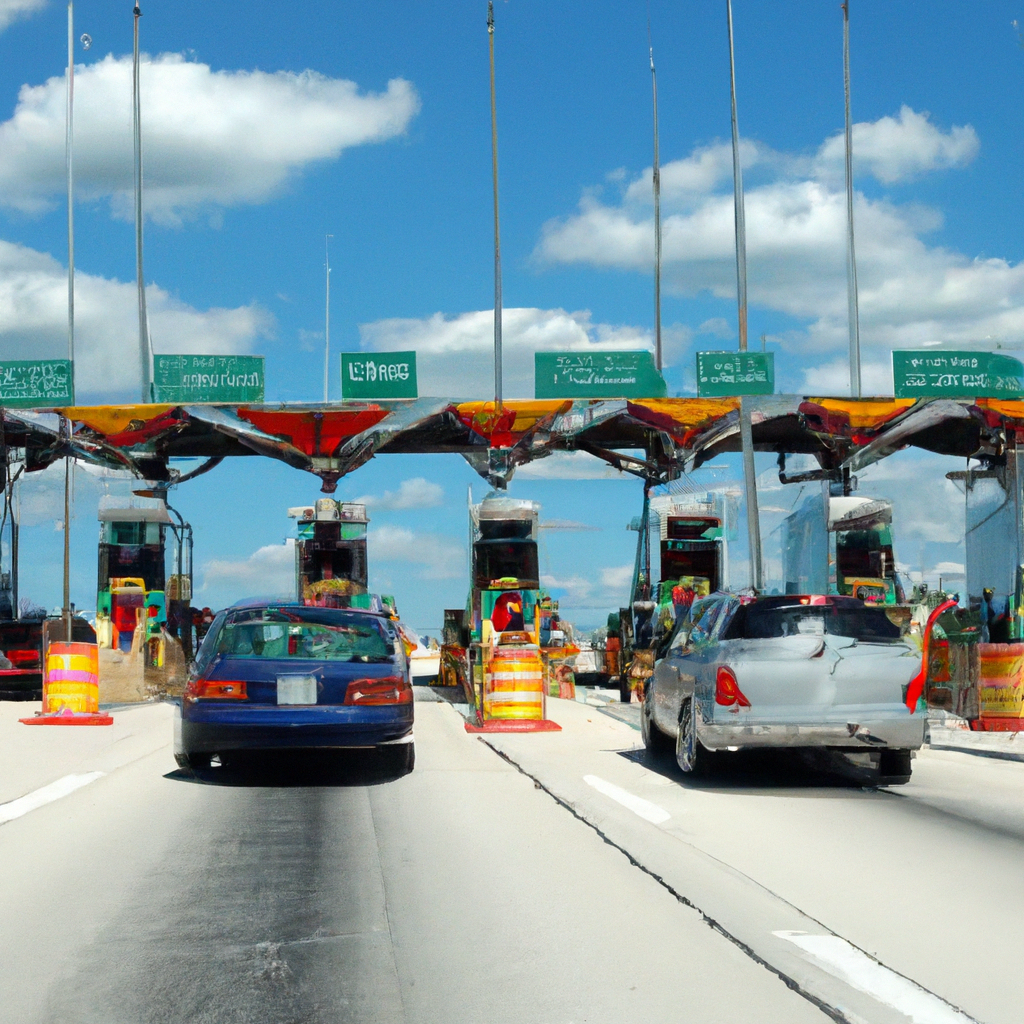Have you ever wondered if there are any toll roads in Maryland? Well, wonder no more! In this article, we will explore the presence of toll roads in the beautiful state of Maryland. From the bustling highways of Baltimore to the scenic routes in rural areas, we will uncover the locations, fees, and benefits of utilizing toll roads in Maryland. So, fasten your seatbelt and get ready to hit the road as we uncover the truth about toll roads in Maryland. Yes, there are several toll roads in the state of Maryland. These toll roads help to fund the construction and maintenance of highways and bridges throughout the state. In this article, we will explore the major toll roads in Maryland, the benefits and criticisms of toll roads, the E-ZPass system in Maryland, toll rates and payment methods, toll violations and penalties, and future toll road projects. So let’s dive in and learn more about toll roads in Maryland!

Interstate Toll Road System
The interstate toll road system in Maryland is a network of highways that require motorists to pay a toll fee for usage. These toll roads are an integral part of the state’s transportation infrastructure and connect major cities and areas of interest. They provide a convenient and efficient way for people to travel long distances, while also generating revenue for the state.
Authority in Maryland
The Maryland Transportation Authority (MDTA) is the governing body responsible for the administration and oversight of toll roads in the state. The MDTA manages and operates the toll facilities, sets the toll rates, and ensures the proper enforcement of toll payment. They work closely with other transportation agencies and stakeholders to ensure the smooth functioning of Maryland’s toll road system.
Benefits of Toll Roads
Toll roads offer several benefits to motorists and the state of Maryland as a whole. Firstly, toll roads provide a reliable and well-maintained highway system that helps reduce congestion and improve travel times. By charging a fee for usage, toll roads can generate revenue that can be reinvested into road maintenance, construction, and improvements.
Toll roads also provide an additional source of funding for transportation infrastructure projects, supplementing the traditional means of financing such as taxes and government budgets. By utilizing tolls, Maryland can fund necessary projects without relying solely on taxpayer dollars.
Furthermore, toll roads often offer amenities and services not found on non-tolled highways, such as additional lanes, electronic toll collection systems, and frequent rest stops. These features enhance the overall driving experience and contribute to safer and more pleasant journeys.
Criticism of Toll Roads
Despite their benefits, toll roads also face criticism from some drivers and communities. One of the main concerns is the financial burden placed on motorists. Toll fees can add up quickly, especially for frequent users of toll roads. This can be particularly challenging for low-income individuals and families who rely on these highways for daily commutes or necessary travel.
Another criticism is the potential for congestion and traffic delays at toll plazas. Paying tolls in cash can slow down the flow of traffic, causing backups and delays. However, this issue has been addressed with the implementation of electronic toll collection systems, such as the E-ZPass system in Maryland, which we will discuss further later in the article.
Additionally, some people argue that toll roads create a barrier to travel and limit accessibility, particularly for those who cannot afford the toll fees. This can disproportionately affect certain communities and result in social and economic inequities. It is important for toll road authorities to consider the impact on all individuals and communities when implementing tolls and setting toll rates.

Major Toll Roads in Maryland
Maryland has several major toll roads that connect different parts of the state and facilitate travel between neighboring states. These toll roads include Interstate 95, Interstate 895, Interstate 195, Interstate 495, Thomas J. Hatem Memorial Bridge, Bay Bridge, and Interstate 895 Canton Viaduct.
Interstate 95 is a key north-south highway that runs through Maryland, connecting major cities such as Baltimore and Washington D.C. It is an important route for both local commuters and long-distance travelers.
Interstate 895, also known as the Harbor Tunnel Thruway, provides a direct connection between Interstate 95 and the Port of Baltimore. This toll road is crucial for facilitating the movement of goods and supporting the local economy.
Interstate 195 is a short toll road that connects Baltimore/Washington International Thurgood Marshall Airport to Interstate 95. It offers a convenient route for passengers traveling to and from the airport.
Interstate 495, commonly referred to as the Capital Beltway, is a major highway that encircles Washington D.C. It allows for efficient travel around the D.C. metropolitan area and provides access to important destinations in Maryland and Virginia.
The Thomas J. Hatem Memorial Bridge is part of U.S. Route 40 and spans the Susquehanna River, connecting Harford County and Cecil County. This toll bridge provides a vital link for commuters and commercial vehicles traveling between these areas.
The Bay Bridge, officially known as the William Preston Lane Jr. Memorial Bridge, spans the Chesapeake Bay and connects the eastern and western shores of Maryland. It is a popular route for beachgoers and travelers heading to the Eastern Shore.
Interstate 895 Canton Viaduct is a segment of Interstate 895 that spans the harbor in Baltimore, offering a direct route to and from the industrial areas of the city.
These toll roads play a significant role in Maryland’s transportation network and provide essential connections for both residents and visitors.
E-ZPass System in Maryland
Electronic toll collection systems, such as the E-ZPass system, have revolutionized the way tolls are collected and managed. In Maryland, the E-ZPass system provides a convenient and efficient way for motorists to pay their tolls electronically, reducing the need for cash payments at toll plazas.
Electronic Toll Collection
The E-ZPass system utilizes electronic transponders that are mounted on the windshields of vehicles. When a vehicle equipped with an E-ZPass transponder passes through a toll plaza, the system automatically deducts the toll fee from the motorist’s prepaid account. This eliminates the need to stop and pay with cash, allowing for smoother traffic flow and reduced congestion at toll plazas.
E-ZPass Benefits
There are several benefits to using the E-ZPass system in Maryland. Firstly, E-ZPass holders enjoy discounted toll rates compared to cash-paying motorists. This incentive encourages more drivers to use the electronic toll collection system, resulting in faster and more efficient toll plaza operations.
Another benefit is the ability to use E-ZPass on toll roads and bridges throughout the northeast and mid-Atlantic regions. E-ZPass is accepted in multiple states, including Maryland, Delaware, Virginia, Pennsylvania, New Jersey, New York, and more. This interoperability makes it convenient for motorists to travel across state lines without the need for multiple toll accounts or transponders.
Using E-ZPass also eliminates the hassle of carrying and handling cash for toll payments. This is especially beneficial for those who frequently travel on toll roads or have a daily commute, as it saves time and provides a seamless experience.
How to Obtain an E-ZPass
Obtaining an E-ZPass in Maryland is a straightforward process. Motorists can apply for an E-ZPass online through the Maryland Transportation Authority’s website or visit an E-ZPass Customer Service Center. The application requires providing personal information, vehicle details, and payment options for the initial account load.
Once approved, applicants will receive an E-ZPass transponder that needs to be properly mounted in the vehicle. Motorists can then register their transponder online and activate their account to start using E-ZPass for toll payments.

Toll Rates and Payments
Toll rates in Maryland are calculated based on several factors, including the type of vehicle, the number of axles, and the distance traveled. Rates may vary for different toll roads and bridges, and they are periodically reviewed and adjusted by the Maryland Transportation Authority.
Toll Rate Calculation
The toll rate calculation takes into account the costs associated with operating and maintaining the toll facilities, as well as any debt service or capital investments. Factors such as traffic volume, construction expenses, and anticipated revenue requirements are considered when determining toll rates.
To calculate the toll fee, automated toll collection systems measure the distance traveled by each vehicle. The toll rate per mile is then applied to the distance traveled, resulting in the total toll amount due.
Methods of Payment
There are several methods of payment available for motorists traveling on toll roads in Maryland. Cash payment is an option at most toll plazas, where motorists can pay the toll fee using cash or coins. However, it is important to note that some toll plazas may only accept electronic payment methods.
As mentioned earlier, the E-ZPass system is the most convenient and efficient way to pay tolls electronically. By using an E-ZPass transponder, motorists can enjoy discounted toll rates and seamless passage through toll plazas.
Additionally, some toll roads may offer other electronic payment options, such as using a credit or debit card at designated lanes. These lanes are equipped with electronic payment terminals that allow for quick and contactless transactions.
Video Toll Rates and Payment
Video toll rates apply to motorists who do not have an E-ZPass or fail to pay their tolls at the time of travel. In these cases, cameras capture images of the vehicle’s license plate, and tolls are assessed based on the recorded information. Video toll rates are often higher than the standard E-ZPass rates due to administrative costs and additional processing.
To pay for video tolls, motorists can visit the Maryland Transportation Authority’s website or contact their customer service center. It is crucial to promptly address any outstanding tolls to avoid potential penalties or violations.
Toll Violations and Penalties
Failure to pay tolls or comply with toll road regulations can result in toll violations, which may carry penalties and consequences. It is important for motorists to understand the enforcement procedures and penalties associated with toll road violations.
Violation Enforcement
Toll road authorities in Maryland utilize various methods to enforce toll payment and address violations. These methods include license plate recognition systems, toll law enforcement officers, and cooperation with law enforcement agencies. Motorists who are found to have violated toll payment regulations may receive notices and citations for the unpaid tolls.
Penalties for Toll Violations
The penalties for toll violations in Maryland can vary depending on the specific circumstances and the frequency of the violations. Motorists who fail to pay tolls may be subject to fines, late fees, or additional administrative charges. Repeat offenders or those with substantial outstanding toll balances may face more severe consequences, such as vehicle registration holds or even court actions.
To avoid these penalties, it is important for motorists to ensure timely payment of tolls or promptly address any outstanding tolls or violations. This can be done through the Maryland Transportation Authority’s website or by contacting their customer service center for assistance.
Contesting a Toll Violation
If a motorist believes that they have been unjustly issued a toll violation, they have the right to contest it. To contest a toll violation in Maryland, motorists can follow the instructions provided on the violation notice or contact the toll road authority directly. It is essential to provide any supporting documentation or evidence to support the claim of innocence or error.

Future Toll Road Projects
Maryland has several future toll road projects planned or in progress to meet the growing transportation needs of the state. These projects aim to address congestion, improve travel efficiency, and enhance connectivity.
I-95 Express Toll Lanes
The I-95 Express Toll Lanes project involves the construction of additional lanes on Interstate 95, specifically designed for tolled express travel. These new lanes will offer motorists a faster and more reliable way to travel along this busy corridor. The project includes the implementation of electronic toll collection systems and is expected to improve traffic flow and reduce congestion.
I-270 and I-495 Managed Lanes
The I-270 and I-495 Managed Lanes project focuses on expanding capacity and improving travel on two key highways in the Washington D.C. metropolitan area. Managed lanes, also known as high-occupancy toll (HOT) lanes, allow for high-occupancy vehicles and solo drivers willing to pay a toll to use dedicated lanes. These lanes are intended to provide a more efficient and reliable option for commuters.
Baltimore-Washington Parkway
The Baltimore-Washington Parkway, also known as MD 295, is a major highway that connects Baltimore and Washington D.C. The National Park Service, in collaboration with the Maryland Department of Transportation, is currently exploring options for managing and financing the maintenance and improvements of this critical roadway.
Purple Line Light Rail
The Purple Line is a planned light rail system that will connect various communities in Maryland, including Bethesda, Silver Spring, College Park, and New Carrollton. This rail line will provide an alternative mode of transportation and help alleviate congestion on the roadways. The funding for the project includes a combination of federal, state, and private investments, including toll revenue.
Conclusion
Toll roads play a crucial role in Maryland’s transportation infrastructure, providing essential connections and generating revenue for road maintenance and improvements. While toll roads offer benefits such as reduced congestion and additional funding sources, they also face criticism regarding affordability and accessibility.
The E-ZPass system has greatly improved the convenience and efficiency of toll payment, and motorists are encouraged to take advantage of this electronic toll collection system. Understanding toll rates, payment methods, and potential violations is important to ensure a smooth and hassle-free driving experience.
Maryland has various future toll road projects in the pipeline that will further improve travel efficiency, address congestion, and enhance connectivity. These projects, combined with appropriate toll road management and consideration of social and economic impacts, will shape the future of toll roads in Maryland for the benefit of all motorists.


